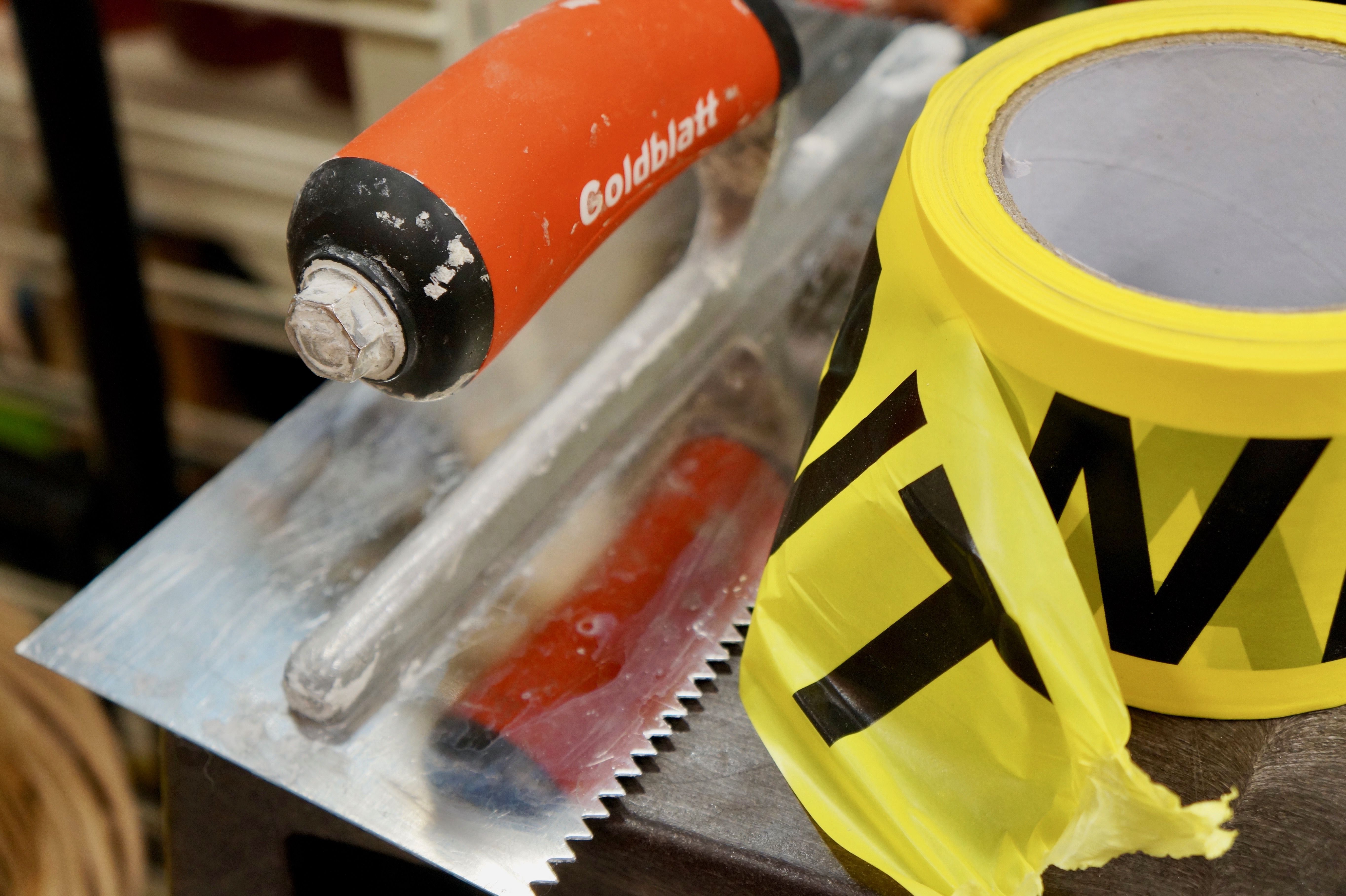How to Repair a Hole in Drywall
Drywall repair is a common maintenance task that many business owners can do themselves. The tools, techniques and skill set required for any drywall repair depend largely on the size of the hole. If you can flip a pancake, you shouldn’t have any problem patching a small ding in your drywall, but it gets more difficult as the holes get larger. But don’t worry; Just Let Me Do It is here to help!

Drywall Repair Techniques
Depending on the size of the hole, the drywall repair method will vary. Not all the tools mentioned may be required–so before you buy anything for the project, check the drywall repair guidelines to see what you need. With each step below, you will see the required materials. Drywall tape comes in both paper and mesh varieties, but we recommend the mesh type
Tools & Materials for Drywall Repair
- Putty knife
- Carpenter’s knife
- 120-grit sandpaper
- Trowel
- Broad Knife
- Drywall Saw
- Drill
- Dust Mask
- Pre-mixed Joint Compound
- Patch Kit
- Drywall Screws
- Drywall Tape
- Spackle
- Furring Strips
How to Patch a Small Hole
Small holes in drywall are easy to repair. Any hole larger than your thumbnail should be repaired with the instructions for Medium or Large holes. First, fill the hole using spackle or joint compound. If you’re using joint compound, buy it pre-mixed for small DIY jobs. Spackle can shrink as it dries in larger holes and may require an extra application. Joint compound can run out or bulge as it sets and will require sanding and a second application.
Materials: For this job you’ll need joint compound or spackle.
- Clean the hole by removing any loose drywall debris.
- Use a carpenter’s knife to put a beveled edge around the circumference of the hole if it’s larger than a dime.
- Use a damp rag to wipe off any dust.
- Use a putty knife to fill the hole with spackle or joint compound, and then smear the filler to make it flush with the wall.
- Allow the filler to air-dry.
- Lightly sand the area with sandpaper and apply a second coat. Sand once dry.
- Prime and paint over the filled hole.
How to Patch a Medium Hole
For a professional finish follow the instructions under Large hole. This method requires finesse to feather the joint compound into the rest of the wall – if not done correctly, you will see a slight bulge in the wall. You must feather the repair area (gradually reduce the thickness outward) when applying the joint compound and in the sanding stage. Use a drywall patch that is slightly larger than the hole that needs to be repaired. You can purchase these at your local hardware store. Look for a kit, which will include everything you need.
Materials: For this job you’ll need a drywall patch and joint compound.
- Sand and clean the area around the hole where the patch will contact the wall.
- Apply the adhesive side of the patch to the wall.
- Cover the patch with a joint compound.
- Use a crisscross pattern with your putty knife to apply the compound.
- Apply enough compound to cover the patch and have enough to feather.
- Once dry, lightly sand and apply another coat.
- Sand the dry second coat with sandpaper.
- Feather the edges to blend the repair into the wall.
- Prime and paint.
How to Patch a Large Hole
Take your time and be careful not to nick any wires or plumbing during installation. Although this method requires more tools, the final result is more professional looking.
Materials: For this job you’ll need a scrap piece of drywall, furring strips, joint tape, drywall screws, and joint compound.
- Cut out a square piece of new drywall that’s slightly larger than the hole.
- Put this piece on top of the area that needs to be patched, and trace around it with a pencil.
- Use a drywall saw to cut out the damaged drywall along your trace lines.
- Place the furring strips through the hole. Pull them tight against the backside of the drywall and anchor them from the front with drywall screws.
- Make sure the screws firmly anchor the furring strips to the back of the drywall. The screw heads should be flush or slightly dimpled.
- Set the new drywall patch in place and secure it to the furring strips with drywall screws.
- Hold everything together by bedding in drywall tape with joint compound along the edges.
- Cover everything with drywall joint compound.
- Lightly sand once dry and apply a second coat.
- Sand the second coat once it dries.
- Prime and paint.
Tips
- Apply a third layer of joint compound for a smoother look after the second layer has been sanded.
- For patches, spread the joint compound over an area much wider than the patch so you have material to feather.
- Wear a dust mask while sanding joint compound or have someone capture dust with a vacuum.
- If you’re repairing textured drywall, use a can of wall texture spray before you paint.
- In a pinch, use a heavy-duty paint stirring stick in place of a furring strip.
- Never skip the priming step – joint compound cannot be painted on top of. Some spackles may have primer already in them. These are best for small holes only.
Professional Drywall Repair
Drywall repair is pretty straightforward. If you’re up for the challenge and have the right tools, it can be a satisfying DIY repair. However, if you don’t have the tools, if the hole requires new drywall replacement, or if the entire drywall sheet needs to be replaced, hiring a professional is the next best option.Need some help? Just Let Me Do It’s drywall repair professionals can patch the holes in your wall or replace entire sheets of drywall if needed. The results are seamless and beautiful. Drywall repair, drywall hanging and drywall finishing – we do it all! Contact Just Let Me Do It to discuss your project today.

Recent Comments